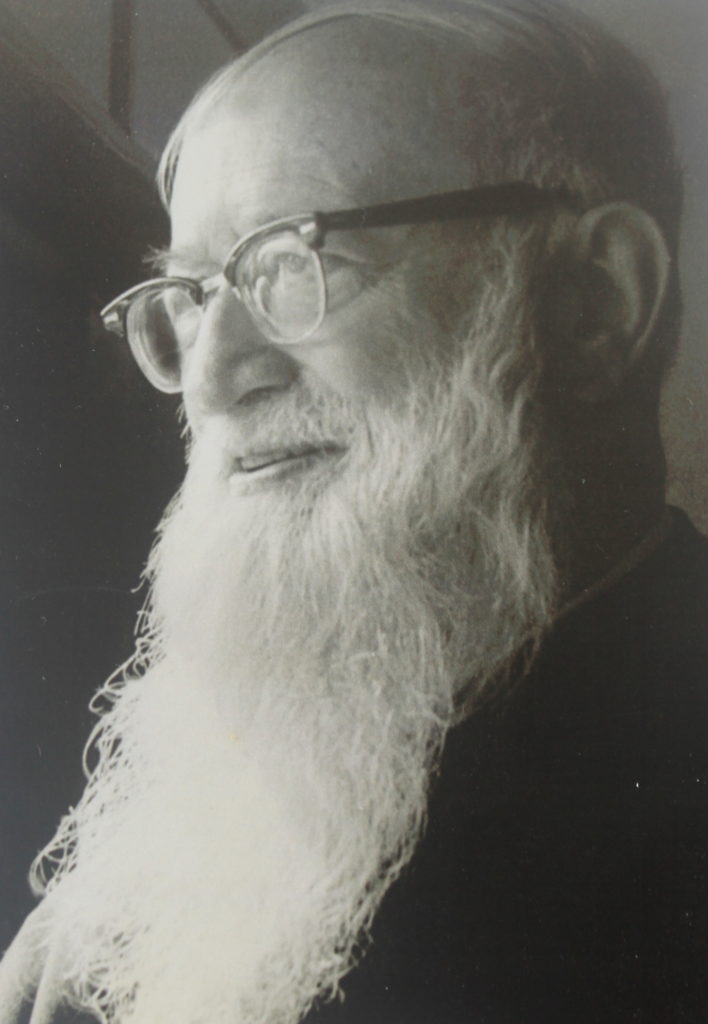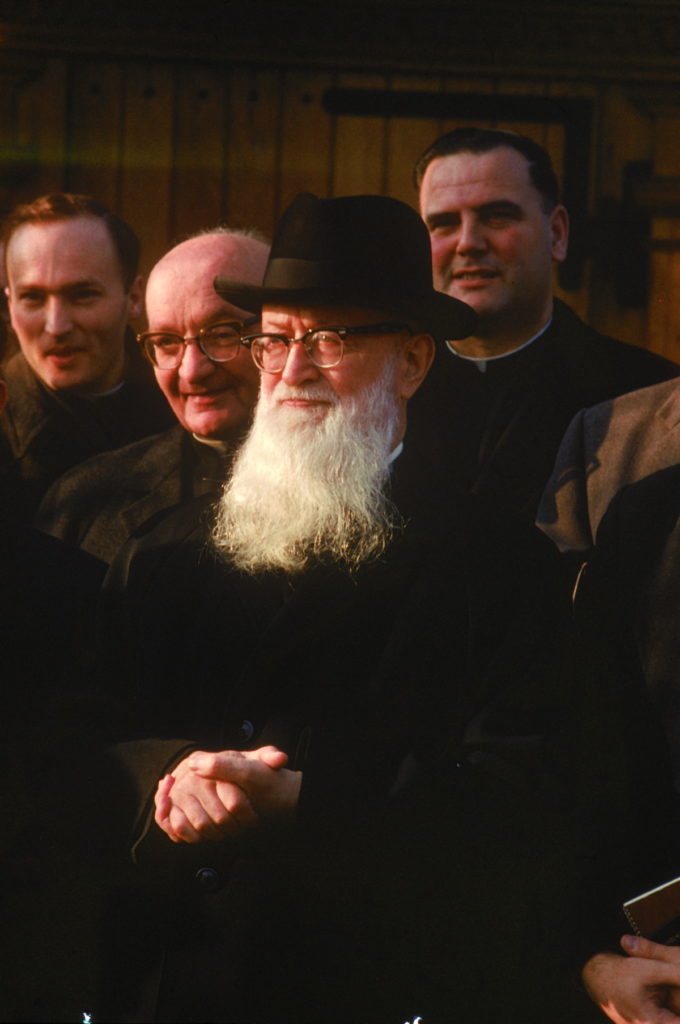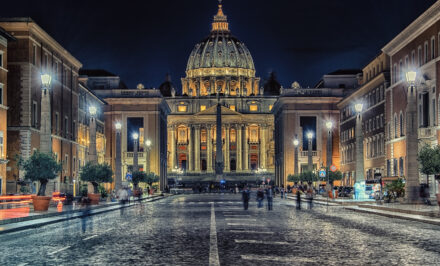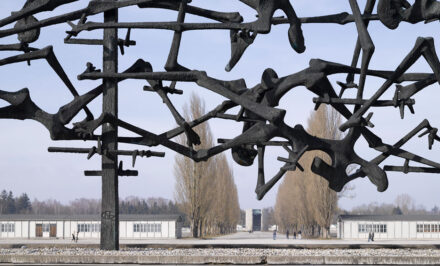If we really believe that Fr. Kentenich was a prophet, then we agree that, like all prophets he had a vision of future events. In the same way as we keep going back to the prophecies of the great prophets and interpret them within the context of our times, we can also do this with the life and witness of our founder, Joseph Kentenich. —
Juan Zaforas, Madrid, Spain, schoenstatt.org core team •
A few days ago, the Schoenstatt.org core team shared an article published by “El País,” a Spanish newspaper, on the subject of Big Data and the use of personal information on social media networks to develop political strategies (Cambridge Analytica, Facebook, etc). It made me reflect on what I read and I shared it. Fr. José María García and Maria Fischer encouraged me to explore the topic further, and so I did. The fruit of that reflection became a text that I shared with the Schoenstatt.org team for feedback. The title is “Schoenstatt for the 21st century” and I think it is easy to read, but I recommend reading it several times to really dive into the topic. It was written for the purposes of reflection and application to our communicational project, Schoenstatt.org, but this topic isn’t just for our team and our project. Thank you for your time and responsible commitment to Fr. Kentenich and his family’s prophetic mission.
Schoenstatt for the 21st century

If we really believe that Fr. Kentenich was a prophet, then we agree that, like all prophets he had a vision of future events. In the same way as we keep going back to the prophecies of the great prophets and interpret them within the context of our times, we can also do it with the life and witness of our founder, Joseph Kentenich.
Let us look at some events in his life
- In 1912, Joseph Kentenich, who was working as a Latin and German teacher at the Minor Seminary of the Pallottine Fathers in the Schoenstatt Valley, near Vallender, was appointed as the spiritual direction for the seminary.
Fr. Kentenich did not trust the pedagogical methods used at the seminary and decided to change them, despite the problems that these could pose for him. His aim was to form firm and free personalities, who could live holy lives in a modern world, and he guided his students towards serious self-education, giving them the Blessed Mother as their mother and educator.
Today’s society is not so different from the one Fr. Kentenich lived in 100 years ago. The tools have changed, becoming far more powerful, fast and effective than those they had then (Internet, social networks, Big Data…) but the root of the problem has not changed. If we look at what was happening in Germany and Europe at that time, we can see that we are not so far off ourselves. Fr. Kentenich was not oblivious to what was happening around him and he decided to act where he could and had the ability to do so, as spiritual director for the Minor Seminary of the Pallottine Fathers, in his daily work and activities.
- The first prophetic interpretation tells us that we should act from the ordinary, from our ordinary daily duties, from our work and roles, as Fr. Kentenich did. Observe the reality that surrounds us, set goals, question the way it has always been done if necessary, change obsolete methods and place everything into God’s hands, remaining attentive to the creative resultant. Let us always ask ourselves, “now what”, we should take nothing for granted, let us be critical and set our goals.
- A second interpretation from this passage lies in Fr. Kentenich’s objective: forming firm and free personalities. Undoubtedly, this is the best antidote to avoid the depersonalised society in which we find ourselves. Let us educate ourselves, form and instruct ourselves within this society by being critical, free, by not believing everything, not becoming dependent on anything or anybody, particularly the highly sophisticated tools that surround us. Let us ask ourselves what we do in our surroundings regarding the education and formation of others.
- He founded a Marian congregation with young seminarians on 19 April 1914, inspired by a very popular pedagogical model within the German Church at the time. Later, on 18 October 1914, he and a group of boys from the Congregation sealed a covenant of love with the Blessed Mother in a small chapel in the Seminary garden, which they set up as a meeting place.
This episode is key in the development of what followed and the foundations of the Schoenstatt Movement. Once Fr. Kentenich took the decision to act and had set his goals, the next step was to ensure that the boys who had been entrusted to him became a community, establishing attachments among themselves, sharing goals, setting objectives and goals. But the community is not just any community, it is a Marian Congregation that culminates in a covenant of love with Mary. Who better to carry out the mission undertaken!
- The third prophetic interpretation shows us that the task is immense and that in our littleness, we need help, starting with the covenant of love, of which we are heirs. We will receive an abundance of graces to carry out the task, based on the extent to which we live the covenant of love fully. But we cannot forget the other part of the prophetic vision. The community of hearts is fundamental to achieving it. Let us live out our covenant of love with Mary intensely and develop attachments in our community.
- In 1919 the Apostolic Federation of Schoenstatt was founded with the intention of expanding the Marian charism beyond the young Pallottine seminarians.
Shortly after the end of the First World War, far from having exhausted what had begun in the Minor Seminary at Schoenstatt, Fr. Kentenich was surprised by the interest of men and women who had learnt about the existence of Schoenstatt and Fr. Kentenich on the battlefront, and wanted to be align themselves to this idea. Instead of responding emotionally to what had happened, he appeared reticent and cautious. One of these moments is Höerde, where he didn’t even go the meeting in which the seed of what would later become the Movement and the Federation was planted.
- The fourth prophetic interpretation is that we have to allow ourselves to be surprised and trust in God like children. Let us become more childlike before God and allow ourselves to be surprised.
- In the 1930s, the Movement growing around Fr. Kentenich caught the attention of the Nazi government, to which Fr. Kentenich had been vehemently opposed since it began and constantly criticised it. In opposition to the pedagogy of social massification promoted by the National Socialists, Fr. Kentenich proposed a pedagogy of interior freedom and personal decision, which does not blindly ascribe to any ideology but guarantees individual freedom and the conscience of each person, in the light of faith and a Marian education.
There is little we can add to what happens at this point. Fr. Kentenich already had a large community, the covenant of love with Mary and several clear objectives. All that was left was to act despite the risk it could bring, but he decided to take the death leap that allowed the salvation of a sick society, namely the formation of strong and free personalities. He repeated the model he had used in the seminary, but now, he confronted a society that consisted of more than a group of young boys, and the national socialist regime instead of his superiors.
- Fifth prophetic vision. The objectives were clear from the beginning and remain so: membership is easy with the covenant of love with Mary and the formation of community, but now there is great need for courage and boldness to act. The times are different and more complex, but Fr. Kentenich takes the risk, he leaves his comfort zone and once again confronts the establishment. We should act decisively and with boldness, even if it brings with it certain difficulty.
- After preaching a retreat for priests, Joseph Kentenich was imprisoned in Koblenz in 1941, and the following year was sent to the Dachau concentration camp. According to sources who were close to him, he had the opportunity to avoid being sent to the concentration camp with the help of some influential connections, but according to his own testimony years later, his decision to go to Dachau was the result of discernment of God’s plans for him, and he offered himself as a sacrifice for the sanctification of the Schoenstatt family and Germany. Based on his vision of faith, going to the concentration camp was in God’s plans as a means of self-sanctification and the sanctification of his spiritual family, the Schoenstatt Family. On 20 January 1942, after turning down the opportunity to avoid this suffering, Joseph Kentenich entered the Dachau concentration camp, sharing the pain of thousands of Jewish prisoners, political prisoners, and other people who were considered to be dangerous to Adolf Hitler’s regime, including many other priests and bishops.
Undoubtedly this was one of the most difficult moments in Fr. Kentenich’s life and in the life of the Schoenstatt Movement. His life was at risk and all their plans could have crumbled in an instant. Fr. Kentenich saw this event as the voice of God and did nothing to prevent it, discerning God’s plans for him
- The sixth prophetic vision shows us how Fr. Kentenich was able to listen to the voice of God and his plans despite the evil that surrounded the decisions. It shows that God makes use of any circumstance, good or bad, to carry out the plans that he has for each of us. We are instruments in his hand who act freely and who, like Fr. Kentenich, try to discern God’s plan for each of us. Let us listen to the voice of God and to act in freedom to discern his plans.
- The enormous spiritual influence that Fr. Kentenich gained in the years after the concentration camp, as well as the depth of the attachment that bound him to its founding, led to misunderstandings about him and his Work, both within the Movement and among the Church authorities. Several people questioned the pedagogical methods of Schoenstatt’s spirituality because of its distinction from the pedagogical structures of the Church before the Second Vatican Council. Although many Church authorities attended the retreats and knew about Schoenstatt’s Marian spirituality, some of them found it very untraditional and requested a Church visitation to Fr. Kentenich and his movement. Many would have considered the results of the visitation a success because they approved all of the content and spirituality of the movement, simply noting that certain methods could perhaps be reconsidered. Fr. Kentenich’s response was unexpected: for him, the methods in question were precisely the pillars of the movement’s charism and the surest way to ensure the “organic” education of the faith that he was seeking. The visitation gave rise to extensive correspondence between Fr. Kentenich and the Church authorities, emphasising the importance of the points in question. He argued that poor understanding of these was precisely the consequence of the failings in the understanding of the faith by the Church authorities prior to Vatican II. Today, all of his corrections are admired and were even included in the composition of some of the topics discussed at the Council, but at the time, they caused great controversy, and the firmness with which Fr. Kentenich expressed certain points caused great indignation by some of the authorities. Fr. Kentenich’s response was seen as disproportionate to the simplicity of the ecclesiastical recommendation and his critical and energetic behaviour was an attack on the Church authorities. Without being given the right of response, the Church ordered Joseph Kentenich to separate himself from the Schoenstatt Movement until several issues could be clarified. The separation from his Work would take him far from any of its centres and was received by his Pallottine brothers in Milwaukee, United States. The disciplinary measure made him an exile and several problems extended his painful sentence for 14 years..
If there is any prophetic moment, this is it. Throughout this time, Fr. Kentenich points us to at least two important issues. The first is to uphold the principles that are the basis for our lives and established goals. In freedom and despite the consequences, he remained truthful and nothing could change this. The second lesson that we can take is his acceptance of the consequences of his decision, which meant nothing less than 14 years of separation from his Work. These two attitudes give us a clear message of his prophetic vision.
- The seventh prophetic vision tells us to maintain our principles despite the implications and how it can complicate our lives. Let us follow our principles until the end without thinking about the consequences that this may have for us.
- The epigraph on his tomb, chosen by him, is a summary of the fundamental attitude that guided him throughout his life and work, of the deepest and most sincere intention of his heart: “Dilexit Ecclesiam,” the Latin words meaning “He loved the Church.”
We look at the last moment of this very brief journey through the life of the founder of the Schoenstatt Movement and we end with the epitaph that summarises and gives meaning to his life, Dilexit Ecclesiam. These two words contain the most prophetic message of all that he left us throughout his life and work. Nothing would make sense if he had not done it for love of the Church and allowed him to accept many questionable decisions against him, without diminishing his love for everything he did for the Church.
- The last prophetic vision deals with unconditional love for the Church above all. Let us love the Church above all, even if we sometimes do not agree with all of its decisions.
Bringing together these eight prophetic voices, we have the following work programme:
- Let us always ask ourselves, “now what”, we should take nothing for granted, let us be critical and set our goals.
- Let us ask ourselves what we do around us, regarding the education and formation of others.
- Let us live out our covenant of love with Mary intensely and develop attachments in our community.
- Let us become more childlike before God and allow ourselves to be surprised.
- We should act decisively and with boldness, even if it brings with it certain difficulty.
- Let us listen to the voice of God and to act in freedom to discern his plans.
- Let us follow our principles until the end without thinking about the consequences that this may have for us.
- Let us love the Church above all, even if we sometimes do not agree with all of its decisions.
Looking at these eight attitudes in relation to our own lives, the life of our group, the life of our community and our projects, such as schoenstatt.org, we can see whether or not we are following the prophetic vision of our father and founder and this will allow us to adapt the fundamentals to the times we are living in. Schoenstatt for the 21st century
Schoenstatt for the 21st century (pdf)
Original: Spanish, 22 April. Translation: Sarah-Leah Pimentel, Cape Town South Africa















